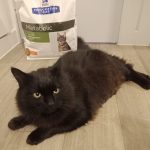Funding the Cost of the Museum
Let’s stop and think about what’s happening with our city. We become the fastest growing urban centre in the country. That growth looks likely to continue. There is a whole combination of things including the success of the port and our growth as a major distribution centre, the success of horticulture, the establishment of the University and much more.
What growth is doing
It’s growth that is compelling the city to provide a whole range of facilities and infrastructure. It is also growth which has almost double the value of the typical Tauranga property. Local government used to talk about funding the cost of growth from growth. It seems sensible idea. The problem is how to do it.
A lot of the amenity – the Museum, a new library, the suggested performing arts Centre – is all about providing the standard of amenity expected in a modern city, and necessary to attract and retain the skilled workforce the city now needs. We are going through the change from being $10 Tauranga to a centre which generates much higher incomes for its residents but needs a much higher standard of amenity as well.
Let’s make growth fund growth
If growth really was to fund growth, we look for a way of tapping into part of the value gain the average property owner has had as a way of funding the amenities that growth now requires. The problem is that councils typically do this by increasing the rates we pay each year. It’s a tough one. Incomes haven’t grown as fast as property values and a lot of people would be very hard hit if the Council decided its necessary amenities should be fully rates funded IF THIS WAS DONE IN THE WAY COUNCILS USUALLY DO IT.
Using Council’s powers creatively
Councils have a wide range of powers when it comes to setting rates. Looking at those powers in combination, the Council could decide to take a very different approach to funding the cost of amenities. It could set what’s known as a targeted rate to apply to every property in Tauranga. Importantly it could handle it in a way which had no impact on ratepayers’ cash flow. Instead the Council could decide that the targeted rate need not be paid until the earlier of the expiry of (say) 20 years or the sale of the property.
If the Council decided to set the rate to raise an average of $6000 for each rateable property, that would generate a fund of well over $300 million but no immediate impact on any ratepayer. Instead the money would not need to be paid until the property was sold (or after 20 years). It could be interest-free and would not be subject to any penalty (the Council has flexibility in how sets penalties). It could also include a discount on a sliding scale for properties which was sold within (a) the first five years.
It’s doable, it’s relatively straightforward from a ratepayer’s perspective and it would immediately strengthen the Council’s balance sheet, taking off the pressure it now faces for capital funding of cultural amenities.
What’s wrong with it? Mainly that this is not what councils have normally done. They prefer to take the money off you straight away. Our approach is perfectly workable and by the time most people came to pay the targeted rate (in 20 years when they sell) the additional growth in the value of their property because of the quality of amenities in the city would more than offset the targeted rate itself. It’s the classic win win!
Written by Peter McKinlay, MDL
Contact: Peter[AT]mdl.co.nz










































































